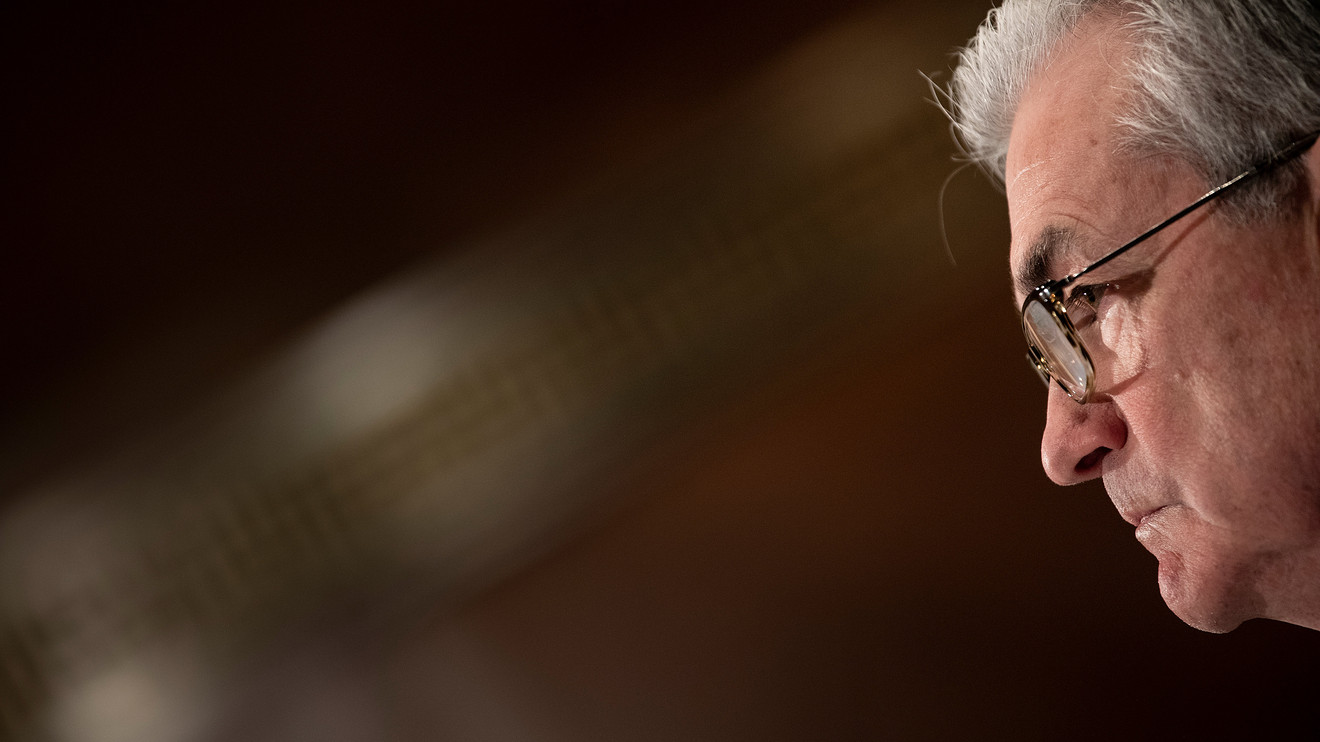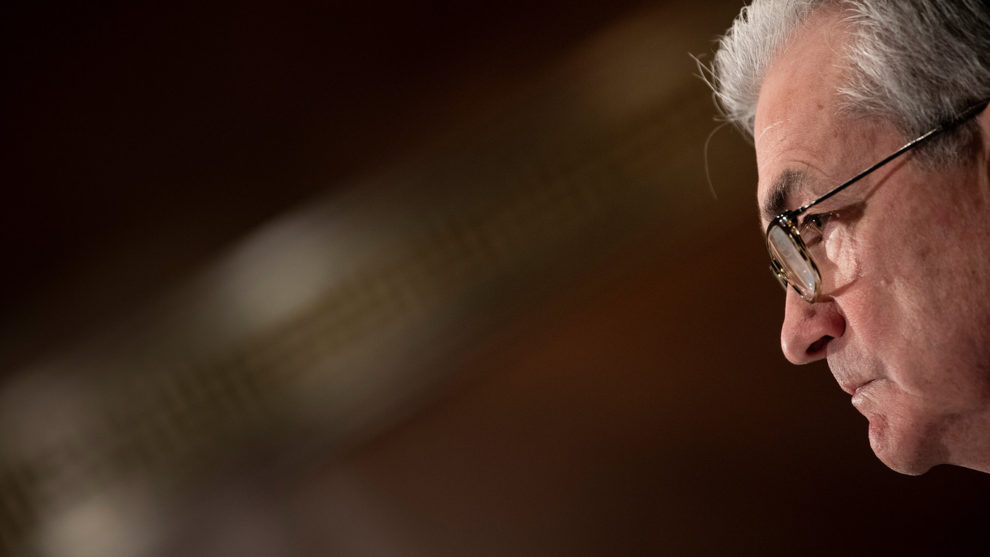
U.S. stocks slipped from session highs Wednesday afternoon, after the Federal Reserve said the ongoing public health crisis sparked by the coronavirus will weigh heavily on economic activity, employment and inflation in the near term.
The central bank also reiterated it will use its full range of tools to help the economy facing considerable risk from the s pandemic.
What are major indexes doing?
The Dow Jones Industrial Average DJIA, +2.18% was up 568 points, or 2.4%, at 24,673, while the S&P 500 SPX, +2.62% was up 77 points, or 2.7%, at 2,940. The Nasdaq Composite COMP, +3.48% added 294 points, or 3.4%, to 8,901.
Stocks gave up early gains Tuesday to end lower, with the Dow snapping a four-day winning streak to close at 24,101.55, down 32.23 points, or 0.1%. The S&P 500 lost 15.09 points, or 0.5%, to close at 2,863.39, while the Nasdaq Composite settled at 8,607.73, down 122.43 points, or 1.4%.
What’s driving the market?
The Federal Reserve on Wednesday said it expects the pandemic to weigh heavily on the U.S. economy, while reiterating its committed to use its full range of tools to help offset the “considerable risk” from the coronavirus, in a statement release following its two-day policy meeting.
Chairman Jerome Powell is set to hold a briefing Wednesday afternoon.
Economists were expecting the Fed to reassure investors and the public that it will limit the largest economic downturn since the Great Depression, but take little new action.
“The rule of thumb is: Don’t fight the Fed,” said Tim Courtney, chief investment officer at Exencial Wealth Advisors.
“There’s no question that they have been much more pro-active than in 2008,” he told MarketWatch in an interview. “The amount of money they’re looking to potentially pump into market, that supports equity valuations as well.”
“Low interest rates are likely to persist for at least the next couple of years, until long after the virus’ immediate threat has cleared,” wrote Lauren Goodwin, economist and multi-asset portfolio strategist at New York Life Investments in an note Wednesday.
“Lower expected policy rates will contribute to lower yields across the curve. Savings rates are likely to rise, and investors will have to focus on companies that do well in low rate environments, such as large cap companies, growth stocks, or high quality balance sheets.”
The central bank already has embarked on a series of emergency measures since March in response to the coronavirus crisis. The Fed has cut its policy interest rate to nearly zero, started an open-ended bond-buying program, and moved to backstop loans to Main Street and Wall Street to ensure financial markets continue to function.
“They have been able to steady the corporate and municipal bond routs without even having to actually buy the bonds thus far, which is ideal,” wrote Brett Ewing, chief market strategist at First Franklin Financial Services.
Read:Here’s the latest on the Fed’s actions to keep credit flowing to the U.S. economy
The Fed concluded its two-day meeting with a statement at 2 p.m. Eastern, which will be followed a half-hour later by Chairman Jerome Powell’s virtual news conference.
Check out:The Fed has a simple goal this week: to project confidence in the face of the unknown
Investor sentiment received an earlier boost after Gilead Sciences Inc.said Wednesday morning that a government-run clinical trial evaluating its experimental drug remdesivir in certain COVID-19 patients met the study’s main goal. The announcement stirred hopes that pharmaceutical companies were making progress toward a treatment of the COVID-19 disease, but investors are still awaiting details from the study.
The news helped to outweigh the bearish impact of a sharp slump in U.S. economic growth in the first quarter, gross domestic product shrinking by 4.8% on an annualized basis.
See: GDP sinks 4.8% in the first quarter — biggest drop since 2008 and worst is yet to come
Economists surveyed by MarketWatch, on average, were looking for a 3.9% fall in GDP after a 2.1% expansion in the fourth quarter. The first-quarter decline is expected to be only a foretaste of the economic carnage caused by the pandemic lockdowns in the current quarter, but some investors are already looking into the future.
In other U.S. data, pending home sales fell to its lowest level since 2011.
U.S. stocks have been recovering from March 23 lows in recent days on optimism over efforts by European countries and some U.S. states to begin easing up on lockdowns aimed at slowing the spread of COVID-19.
“Part of the reason the market has rallied so dramatically from its March lows is that investors are having an easier time seeing through the economic devastation in the short-term to how a recovery may develop,” said Michael Reynolds, investment strategy officer at Glenmede, in e-mailed comments.
The global case tally climbed to 3.13 million on Wednesday, according to data aggregated by Johns Hopkins University. The death toll rose to 217,555. At least 935,308 people have recovered. The U.S. has the highest case toll at 1.01 million and the highest death toll at 58,355.
Investors also have been sifting through another deluge of first-quarter earnings reports.
Which companies are in focus?
- Gilead Sciences Inc. GILD, +6.75% said the trial of its remdesivir drug treatment for COVID-19 met its main goal, and said the National Institute and Infectious Diseases will provide details at an upcoming meeting. The pharmaceutical company’s stock climbed 4.9%, after seeing a halt to trading before the opening bell.
- Google parent Alphabet Inc. GOOG, +9.43% GOOGL, +9.43% delivered first-quarter results after the closing bell Tuesday, with earnings suffering from a “significant slowdown” in ad sales, though revenues topped expectations. Shares were up more than 9%. Opinion: Google gives Wall Street what it wants, and the stock shoots higher
- Dow component Boeing Inc. BA, +6.44% rose 9.5% after it reported free cash flow was better than forecast, but missed first-quarter revenue and earnings expectations. It also said commercial airplanes fell less than expected.
- Shares of chip maker Advanced Micro Devices Inc. AMD, -3.54% were 2.3% lower, after the company late Wednesday said the COVID-19 pandemic would trim its growth in 2020. First Take:AMD has only one question still lingering about COVID-19 effects
- Starbucks Corp. SBUX, -2.12% shares declined 1.9% in trade after the coffee-chain giant fell short of earnings expectations that had already been trimmed due to worries about the effect of the pandemic on sales.
- Shares of Ford Motor Co. F, -2.23% were down 1.9% even after the auto maker reported a wider-than-expected first-quarter loss of $2 billion, or 50 cents a share, and missed sales expectations as the coronavirus outbreak continues to eliminate demand for cars, and trucks and keeps factories closed.
- General Electric Co. GE, -2.42% shares were off 1.7%, after the industrial conglomerate reported first-quarter adjusted profit and free cash flow expectations that came in below estimates but topped revenue forecasts. The company said it cut 700 jobs in its power division in the first-quarter.
- Shares of Mastercard Inc. MA, +6.63% climbed 6.4% after topping earnings and revenue expectations for its first quarter
How are other markets trading?
Crude prices recovered slightly, but still remain at depressed levels. West Texas Intermediate oil for June delivery CLM20, +23.17% rose $2.95, or 23.9%, to $15.29 a barrel, on the New York Mercantile Exchange. Gold for June delivery GCM20, -0.11% fell $8.80, or 0.5%, to settle at $1,713.40 an ounce.
The 10-year Treasury note yield TMUBMUSD10Y, 0.623% was up 1 basis points to 0.62%. Bond prices move in the opposite direction of yields.
In overseas equities, the STOXX Europe 600 index SXXP, +1.75% finished up 1.8%. China’s benchmark CSI 300 000300, +0.46% index and Hong Kong’s Hang Seng index HSI, +0.27% posted slight gains. Japanese exchanges were closed in observance of the Golden Week holiday.
Sunny Oh contributed reporting









